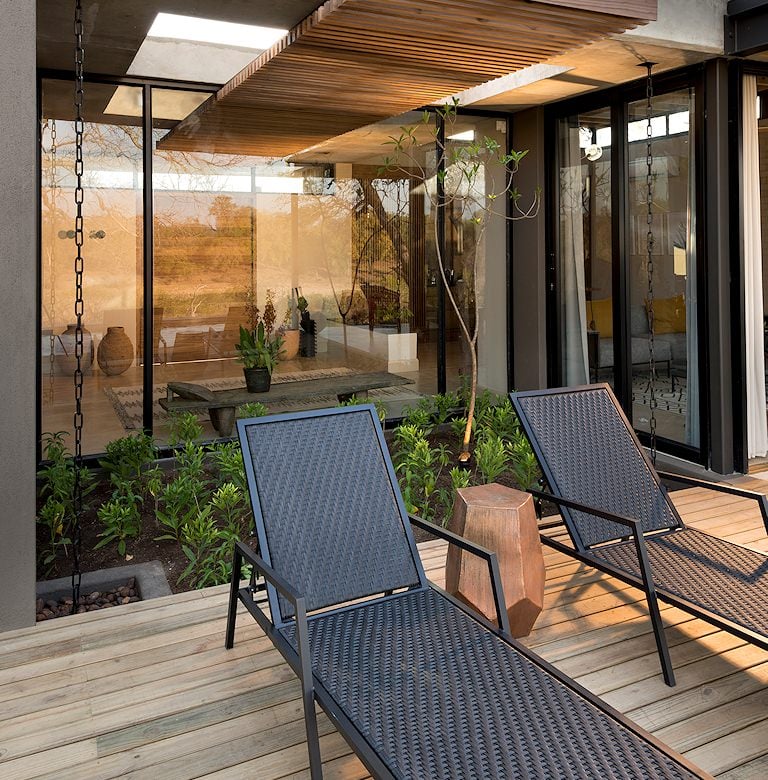18 Day Three Countries & Cape Town Safari
Help Me Plan- Home
- >
- African Safari
- >
- South Africa
- >
- 18 Day Three Countries & Cape Town Safari
Summary
A whirlwind journey through Southern Africa’s most iconic landscapes, this 18 day safari combines immersive Big Five game viewing in the Sabi Sand, Victoria Falls, Chobe and the Okavango Delta with indulgent stays in Cape Town and the Cape Winelands, blending wilderness, culture and fine cuisine.
- 3 Nights Sabi Sand Private Game Reserve
- 1 Night Mpumalanga Highlands
- 3 Nights Livingstone (Victoria Falls)
- 2 Nights Chobe National Park
- 3 Nights Okavango Delta
- 3 Nights Cape Town
- 2 Nights Winelands
Price Per Person Sharing From:
From: POAThe price can be reduced by substituting accommodations
What influences prices?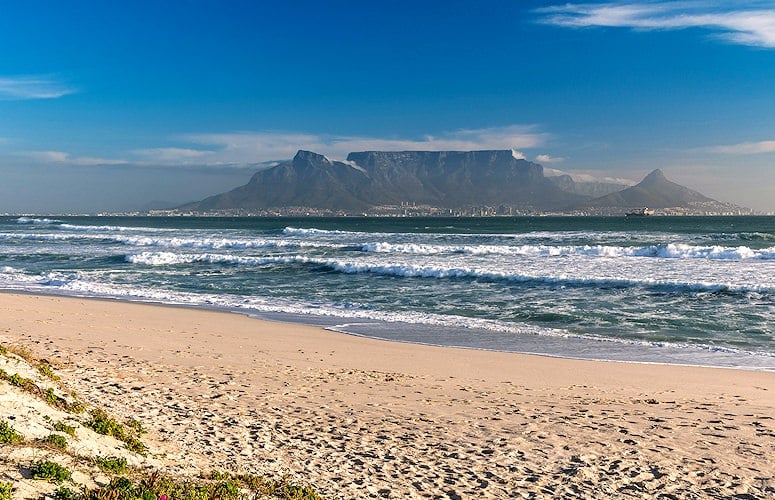
Top-End Luxury Southern Africa Safari Itinerary: 18 Day Three Countries and Cape Town Safari
Day 1: Greater Kruger National Park

Highlights
- First afternoon Big Five game drive in the Sabi Sand
- Check in to an ultra-luxury riverside lodge on the Sabie River
- Sunset drinks and stargazing in a private Big Five reserve
Guests are met and welcomed on arrival at O.R. Tambo International Airport in Johannesburg, where they are assisted in transferring to a flight bound for the Sabi Sand – the first destination of the Three Countries and Cape Town Safari. On arrival in the Sabi Sand Private Game Reserve, which forms part of the unfenced Greater Kruger ecosystem, you are transferred to your luxury lodge overlooking the Sabie River. The change from bustling city to pristine bushveld is immediate, with the sounds of bird calls and distant lion roars setting the tone for your safari.
After some time to refresh and settle in, you depart on your first late afternoon open 4x4 safari with a local ranger and tracker team who know this landscape intimately. Two major rivers, the Sabie and the Sand, cut through this wilderness and provide a lifeline for high concentrations of wildlife, including the Big Five for which Sabi Sand is famous. As the light softens, you search for elephant, buffalo and plains game before returning to camp under a canopy of stars for dinner and a comfortable first night in the African bush.
Day 2: Greater Kruger National Park

Highlights
- Sunrise safari when predators and plains game are most active
- Expert tracking with ranger and tracker in open 4x4 vehicles
- Spotlight night drive in search of elusive nocturnal species
A morning safari is enjoyed shortly after sunrise, when predators are often still active and many animals take advantage of the cool early hours to feed. The soft morning light makes for exceptional photography as you traverse a mosaic of riverine forest, open plains and rocky outcrops. Your guide interprets fresh tracks, bird calls and subtle signs in the environment to maximize wildlife encounters and deepen your appreciation of this classic lowveld ecosystem.
After a hearty brunch back at the lodge, there is time to relax, enjoy your suite or perhaps indulge in a spa treatment before the late afternoon game drive. As day fades into dusk, your ranger uses a spotlight to search for the nocturnal creatures that come alive after dark. This is an ideal time to seek lion and leopard as they begin to patrol their territories or set out on the hunt, offering a thrilling close to another rewarding day in the Greater Kruger National Park.
Day 3: Greater Kruger National Park
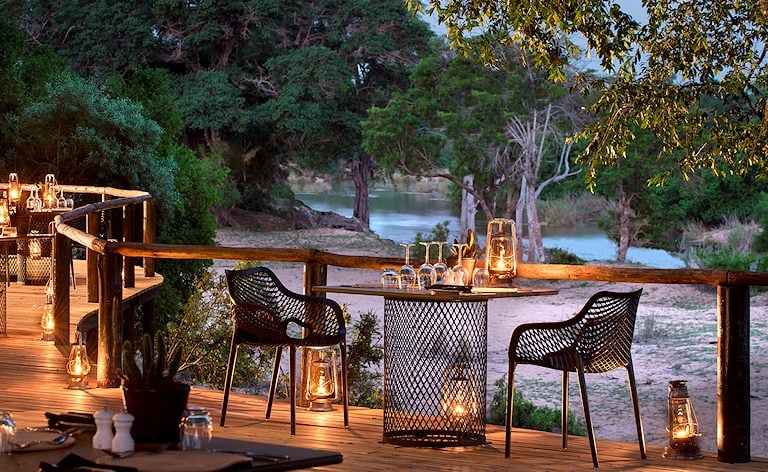
Highlights
- Extended Big Five viewing in a renowned private reserve
- Quiet time on your private deck overlooking riverine bush
- Memorable final sundowners in the Sabi Sand
The day is once again devoted to two open 4x4 safaris in one of South Africa’s premier wildlife destinations. With each drive, you build up a richer picture of the reserve’s resident animals – from large elephant breeding herds and crashes of rhino to warthog, giraffe, zebra and a dazzling variety of antelope. Your guide explains the intricate relationships between predators and prey, and how seasonal changes influence animal movement and behavior in this unfenced reserve adjoining Kruger.
The Sabi Sand enjoys an enviable reputation for consistent Big Five viewing, and sightings of these iconic species – lion, leopard, elephant, rhino and buffalo – are possible on most days. Between game drives you will have time to unwind on your private deck, watching nyala or bushbuck move quietly through the riverine thickets below. As your last evening in this magnificent reserve draws to a close, you can reflect on just how much you have already seen in only a few days on safari.
Day 4: Mpumalanga Highlands
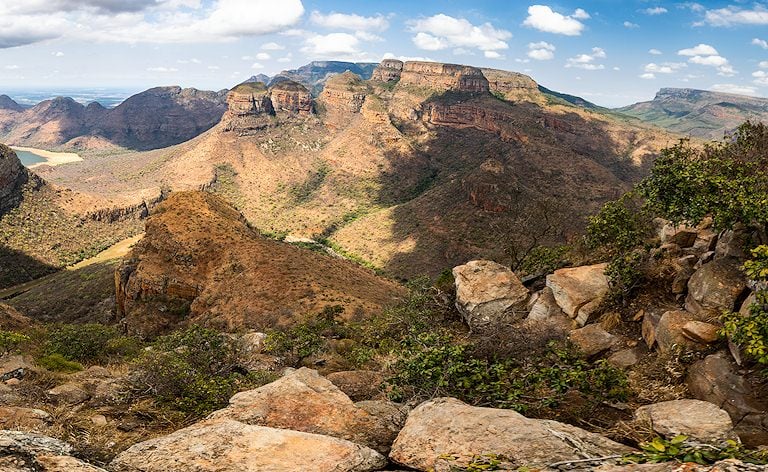
Highlights
- Scenic drive along Mpumalanga’s legendary Panorama Route
- Iconic viewpoints over Blyde River Canyon and God’s Window
- Country estate stay near Dullstroom in the misty highlands
Following a final early morning game drive and breakfast in the wilderness of the Sabi Sand, your safari leaves the lowveld and climbs into the escarpment along Mpumalanga’s famed Panorama Route. The day combines gentle touring with dramatic scenery as you transition from big game country to misty highland vistas. Along the way you pass through small towns and farming communities that illustrate a different side of South African life.
Highlights typically include viewpoints over the Blyde River Canyon and God’s Window, where clear days reveal sweeping views across the lowveld far below. If time allows, the restored gold-rush settlement of Pilgrim’s Rest may also be visited, offering a glimpse into the area’s 19th-century mining history. By late afternoon you arrive at an idyllic country estate near Dullstroom, a region noted for fly-fishing, rolling grasslands and crisp mountain air. A refined dinner and log fires round off a wonderfully varied day.
Day 5: Livingstone

Highlights
- Arrival in Livingstone on the banks of the Zambezi River
- Stay at a classic riverside hotel close to Victoria Falls
- Leisure time to unwind in landscaped gardens beside the river
After breakfast, you travel back to Johannesburg’s O.R. Tambo International Airport for your flight to Livingstone in Zambia. On arrival, you are met and transferred to your elegant hotel set on the banks of the Zambezi River. The property enjoys a privileged location close to the entrance of Mosi-oa-Tunya National Park, offering a tranquil base from which to explore one of the world’s great natural wonders.
The mighty Zambezi flows past the lodge on its journey toward Victoria Falls, which lies only a few kilometers downstream. From manicured lawns you may see hippos surfacing in the river or hear the distant rumble of the falls when water levels are high. The afternoon is left at leisure to relax after your travel day – perhaps with a walk in the gardens, a swim, or a quiet drink on the terrace as you soak up the atmosphere of this iconic stretch of river.
Day 6: Livingstone

Highlights
- Guided exploration of the UNESCO-listed Victoria Falls
- Walk the Knife-Edge Bridge and rainforest viewpoints
- Relaxed Zambezi River sunset cruise with drinks and snacks
The morning is devoted to visiting the falls section of Mosi-oa-Tunya National Park. The local name, meaning “the smoke that thunders,” becomes clear as you approach viewpoints where columns of spray rise high above the gorge and rainbows often shimmer in the mist. A series of paths and viewpoints, including the famous Knife-Edge Bridge, offers different angles of this dramatic curtain of water and the deep chasm it has carved over millennia.
Your guide will share insights into the geology, history and local culture associated with Victoria Falls, as well as pointing out plant species that thrive in the rainforest created by the constant spray. At the entrance area you’ll have time to browse a vibrant craft market showcasing a wide range of African arts and curios. You then return to the hotel around midday, with the afternoon free to relax before embarking on a leisurely Zambezi River sunset cruise. Traditional drinks and snacks are served on board as you watch the sun sink into the western horizon, casting golden light over the river and its islands.
Day 7: Livingstone

Highlights
- Ethical, ground-based elephant encounter near Livingstone
- Learn about elephant behavior and conservation from experts
- Free afternoon to enjoy the Zambezi setting at your hotel
The morning is devoted to a guided elephant encounter in a wilderness area not far from Livingstone. On arrival, you will enjoy a short briefing on elephant behavior, conservation and the role responsible tourism can play in supporting their protection. You then meet a small herd of habituated elephants in the company of experienced handlers, observing them from the ground rather than riding on their backs. This allows you to appreciate their immense size, gentle curiosity and complex social interactions in a respectful, low-impact way.
Walking alongside these remarkable animals, you have time to notice details like the dexterity of their trunks, the texture of their skin and the quiet communication between individuals. There are opportunities to ask questions, listen to fascinating stories from the handlers and capture memorable photographs. After the encounter, you enjoy a relaxed breakfast or brunch at the venue before returning to your hotel, where the remainder of the day is spent at leisure on the banks of the Zambezi.
Day 8: Chobe National Park
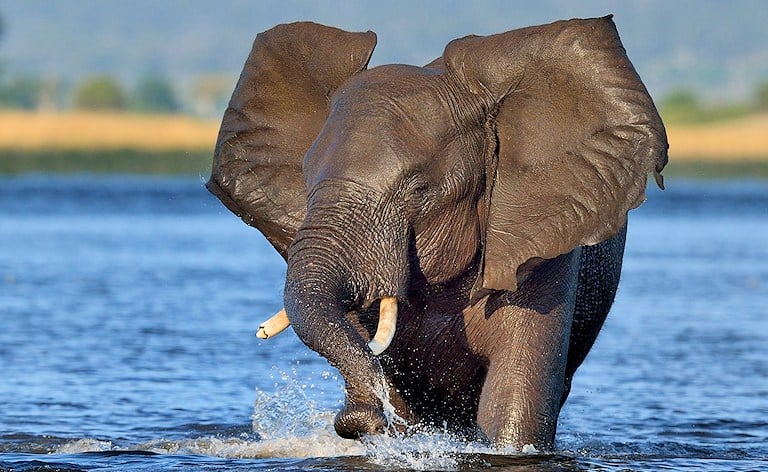
Highlights
- Cross the legendary Kazungula border junction into Botswana
- First game drive in elephant-rich Chobe National Park
- Sunset over the Chobe River floodplains teeming with wildlife
After breakfast you depart by road for Kazungula, the legendary border junction where Zambia, Zimbabwe, Botswana and Namibia meet. A short crossing of the Zambezi River brings you into Botswana, followed by a brief drive to the village of Kasane on the edge of Chobe National Park. The transition from the spray of Victoria Falls to the broad floodplains of the Chobe River highlights the diversity of this safari.
Once you have checked in at your lodge, there is time to unwind before heading out on your first afternoon game drive. Chobe is renowned for its large herds of elephant and buffalo, particularly along the riverfront. Your ranger and tracker guide you across open floodplains and through woodland in search of elephants cooling off in the shallows, crocodiles sunning on sandbanks and predators attracted by the abundance of game. As the sun sets in a blaze of color over the river, you return to the lodge for dinner and a peaceful night in this wildlife-rich corner of Botswana.
Day 9: Chobe National Park

Highlights
- Morning safari along the Chobe Riverfront in open 4x4 vehicles
- Afternoon boat cruise among elephants, hippos and crocodiles
- Outstanding birdwatching with raptors, kingfishers and herons
A morning safari in open 4x4 vehicles introduces you to the full richness of life along the Chobe River. Huge breeding herds of elephant often come down to drink and bathe, while hippos wallow in the deeper channels and red lechwe, puku and other antelope graze the lush grass along the banks. Birdlife is prolific, with fish eagles, kingfishers and herons among the many species commonly seen.
In the late afternoon you swap wheels for water with a relaxed boat cruise on the Chobe River. From this lower vantage point you can drift quietly past elephants crossing between islands, watch buffalo stirring up clouds of dust on the shore and observe crocodiles lying motionless at the water’s edge. The soft light and reflections on the river create wonderful photographic opportunities and provide a fittingly tranquil way to end another rewarding day on safari.
Day 10: Okavango Delta

Highlights
- Scenic light aircraft flight into the Okavango Delta
- First game drive in a pristine wetland and island wilderness
- Sundowners in a classic delta setting as frogs and birds call
A final morning activity in Chobe is followed by a road transfer back to Kasane and a light aircraft flight into the Okavango Delta. As you fly over a patchwork of water channels, palm-dotted islands and floodplains, you gain a bird’s-eye view of one of Africa’s most extraordinary wetlands. On landing, you are met by your ranger and transferred to your camp, arriving in time for lunch and an afternoon rest.
Later, you set off on an open 4x4 game drive to explore this unique environment, where desert and delta meet. Seasonal floodwaters spread across the Kalahari sands, creating a rich mosaic of habitats that support everything from elephants and buffalo to lechwe, giraffe and predators such as lion and wild dog. As dusk approaches you stop for sundowners, listening to the chorus of frogs and birds that marks the transition from day to night in this magical setting.
Day 11: Okavango Delta

Highlights
- Combined land and water-based exploration of the Okavango
- Mokoro or boat excursion through reed-lined channels (seasonal)
- Intimate encounters with delta wildlife at close quarters
Today is dedicated to exploring the Okavango Delta through a combination of land and water-based activities, depending on water levels and conditions. Game drives in open vehicles allow you to search for larger species such as elephant, buffalo and various antelope, while also keeping an eye out for big cats resting in the shade. Your ranger explains how wildlife adapts to the ever-changing mosaic of floodplains, channels and islands.
When water levels permit, a highlight is gliding through the narrow reed-lined channels in a mokoro, the traditional dugout canoe of the region, or in a small motorboat. From this quiet and low vantage point you can admire delicate waterlilies, spot brightly colored frogs on reeds and watch antelope wading through the shallows. The slower pace encourages you to absorb the sights, sounds and scents of the delta, making this one of the most immersive experiences of your safari.
Day 12: Okavango Delta

Highlights
- Morning game drives tracking predators and plains game
- Relaxation time at an exclusive delta lodge between activities
- Final Okavango sunset with reflections on mirror-still water
A third day in the Okavango allows you to delve even deeper into this remarkable wilderness. Early morning outings might focus on tracking fresh signs left by predators in the night or spending unhurried time at productive waterholes, observing the interactions between different species coming to drink. The ever-present call of fish eagles and the rustle of wind through papyrus and reeds provide a constant soundtrack.
Between activities you can relax at camp, enjoy the views from your deck or simply watch life unfold around you – from passing elephants to colorful bee-eaters hawking for insects. As this is your final full day in Botswana, the evening sundowner stop takes on special significance. Watching the sun sink behind distant tree lines and seeing the sky reflect in the water is a fitting farewell to one of Africa’s most enchanting ecosystems.
Day 13: Cape Town

Highlights
- Transition from remote wilderness to cosmopolitan Cape Town
- Stay at a luxury hotel on the V&A Waterfront
- Free time to explore shops, markets and harbor views
After a final morning game drive and breakfast in the Okavango, you board a light aircraft flight to Maun, followed by a scheduled flight to Johannesburg. On arrival you are assisted with your connection to Cape Town, where you land later in the day. Your driver meets you and transfers you to your hotel at the V&A Waterfront, Cape Town’s bustling harbor precinct.
The rest of the afternoon and evening are at leisure. You may choose to take a stroll along the waterfront’s promenades, browse its many boutiques and craft markets, or simply relax with a drink while admiring Table Mountain and the surrounding ranges that frame the city. After days in remote wilderness areas, the blend of ocean views, working harbor and cosmopolitan atmosphere makes for a refreshing change of pace.
Day 14: Cape Town

Highlights
- Table Mountain cableway ride with sweeping city and ocean views
- Guided walk among unique fynbos and endemic flora on the summit
- Visit to Kirstenbosch National Botanical Garden beneath the mountain
Today you explore two of Cape Town’s most celebrated attractions. Weather permitting, the morning is devoted to ascending Table Mountain by rotating cable car, which offers sweeping views over the city, Table Bay and the distant Cape Fold Mountains. At the summit, a network of easy paths leads to various viewpoints where your guide points out landmarks and highlights some of the unique plant and animal life that thrives on this flat-topped mountain.
Later, you travel to Kirstenbosch National Botanical Garden on the eastern slopes of Table Mountain. Here you can wander among beautifully curated displays of indigenous fynbos, proteas and other South African plant species, all laid out in a lush, landscaped setting. The gardens are a favorite leisure spot for locals and visitors alike, and their peaceful lawns and shady trees create an ideal atmosphere for a relaxed stroll before returning to your waterfront hotel in the late afternoon.
Day 15: Cape Town
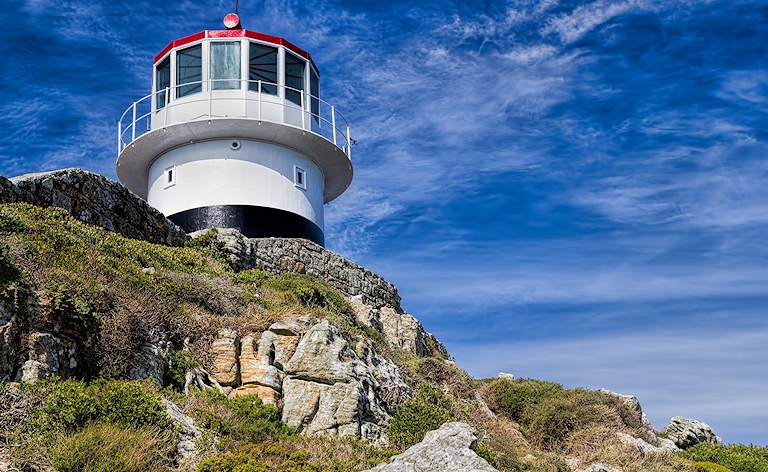
Highlights
- Scenic drive along Chapman’s Peak and the Atlantic seaboard
- Exploration of the Cape of Good Hope and Cape Point
- Close-up viewing of African penguins at Boulders Beach
Today’s full-day tour showcases the scenic splendor of the Cape Peninsula. You travel along the Atlantic coast via the fishing harbor of Hout Bay, where a short boat ride to view a nearby seal colony is often included, before tackling the spectacular cliff-hugging road of Chapman’s Peak Drive. The ever-changing views of sheer mountains plunging into the ocean provide countless photo opportunities along the way.
Continuing south, you enter the Cape of Good Hope section of Table Mountain National Park and make your way to Cape Point, a rugged promontory of towering cliffs, rocky headlands and wild beaches. Here you can walk or ride the funicular to the historic lighthouse and enjoy sweeping views over the meeting point of the cold Atlantic and warmer Indian Ocean currents. On the return journey to Cape Town, a stop is made at Boulders Beach near Simon’s Town, where a thriving colony of African penguins can be observed at close range from specially constructed boardwalks.
Day 16: Winelands
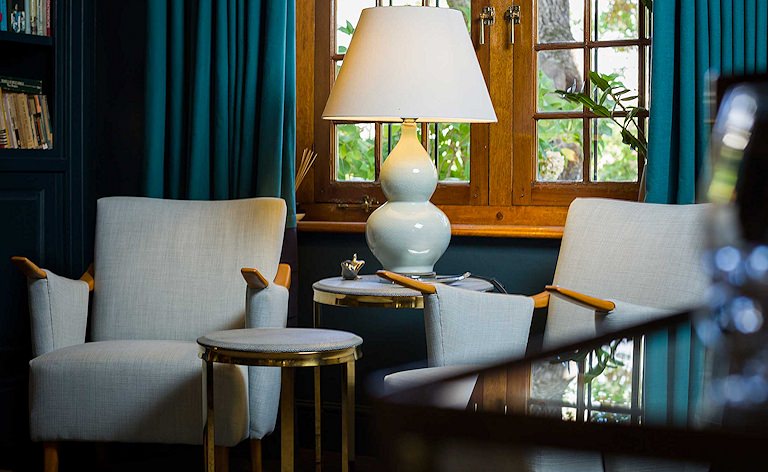
Highlights
- Travel into the historic Stellenbosch wine region
- Guided tastings at selected Cape Winelands estates
- Stroll through the historic gardens and grounds of Vergelegen
After breakfast, your journey continues into the Cape Winelands, one of South Africa’s most picturesque regions. You travel through a landscape of vineyard-clad valleys and rugged mountains en route to Stellenbosch, the country’s second-oldest town. Established in the late 17th century, its oak-lined streets, whitewashed Cape Dutch architecture and vibrant café culture create a charming atmosphere.
The day includes visits to some of the region’s esteemed wine estates, where you can sample a range of cultivars and learn about local terroir and winemaking traditions. Later, you travel via the town of Somerset West to the historic estate of Vergelegen, long associated with statesmen, royalty and notable visitors. Manicured gardens, ancient camphor trees and panoramic views over vineyards and mountains provide a memorable backdrop to your time in the Winelands before you continue to your boutique hotel in the Franschhoek area.
Day 17: Winelands
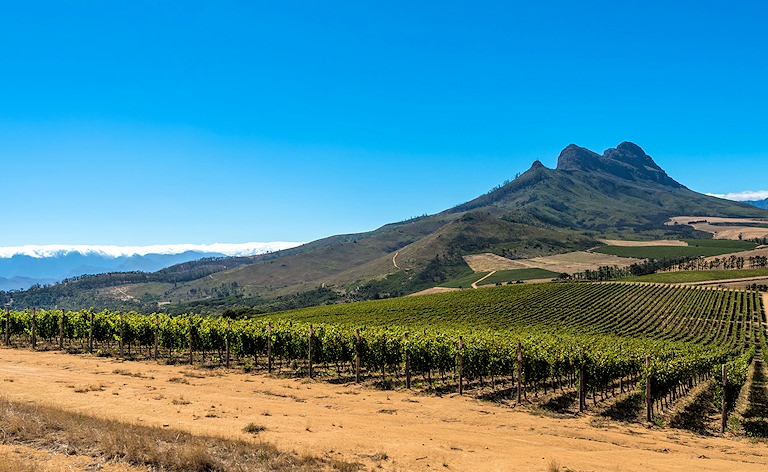
Highlights
- Discover Franschhoek’s French Huguenot wine and food heritage
- Panoramic views from the dramatic Franschhoek Pass
- Visit to the Elgin/Grabouw farming area, heart of apple country
The morning is devoted to exploring the Franschhoek Valley, renowned for its French Huguenot heritage, award-winning wines and gourmet cuisine. Visits to carefully selected wine estates offer the opportunity to taste different styles and varietals, from elegant Méthode Cap Classique sparkling wines to full-bodied reds and crisp whites. Along the way you learn about the valley’s history and how its French roots continue to influence the food and wine culture today.
Later, you cross the scenic Franschhoek Pass, where dramatic mountain views unfold around each bend, and descend toward the fertile Elgin and Grabouw region. This high-lying basin is known as the heart of South Africa’s apple industry, and you visit a working farm to gain insight into orchard practices, seasonal cycles and packing operations. The combination of fine wines, spectacular scenery and an authentic agricultural experience provides a fitting finale to your time in the Cape Winelands.
Day 18: Departure
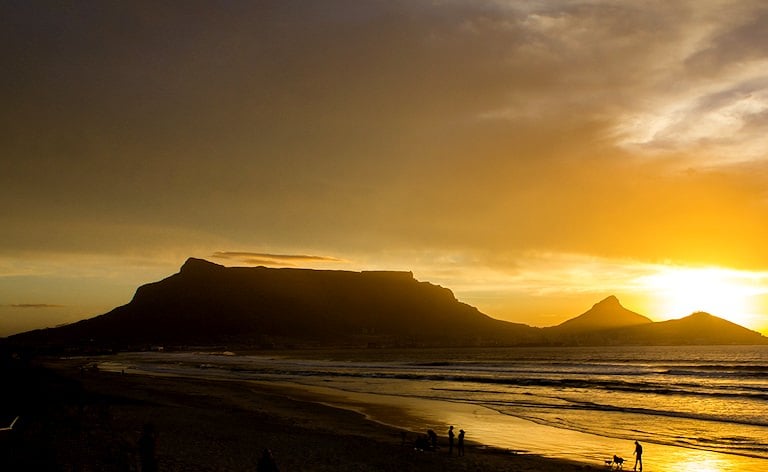
Highlights
- Leisurely final breakfast in the Cape Winelands
- Private transfer to Cape Town International Airport
- Reflect on a multi-country journey from bush to city and vineyards
After a final leisurely breakfast in the Winelands, you may enjoy a last stroll through the gardens or a short walk into Franschhoek before checking out. Your guide then transfers you by road to Cape Town International Airport, traveling back through vineyard-clad valleys and over low mountain passes that frame the Cape landscape. Along the way there is time to chat about favorite moments, ask final questions and confirm the details of your onward journey.
At the airport you bid farewell to your guide and complete check-in formalities for your international flight home or onward travels. As your aircraft climbs away from the Cape, you can reflect on the remarkable variety of experiences included in this itinerary – from Big Five safaris in three different countries to thundering Victoria Falls, serene evenings on the Zambezi, the wetlands of the Okavango Delta and the iconic sights and wine estates of the Cape. The memories and photographs will remain long after you have returned home.
Included
- 3 Nights Lion Sands Ivory Lodge
- 1 Night Walkersons
- 3 Nights Royal Livingstone
- 2 Nights Chobe Chilwero
- 3 Nights Eagle Island
- 3 Nights Cape Grace
- 2 Nights Akademie Street Boutique Hotel
- Resident Rangers: From Day 1–3
- Private Activities: From Day 5–7
- Resident Rangers; From Day 8–12
- Private African Sky Guide: From Day 13–18
- Open 4x4 vehicle: From Day 1–3
- Open 4x4 vehicle; From Day 8–12
- Private Air conditioned vehicle: From Day 13–18
- Only Meals Specified
- Johannesburg to Skukuza
- Johannesburg to Livingstone
- Kasane to Okavango Delta
- Okavango Delta to Maun
- Maun to Johannesburg
- Johannesburg to Cape Town
- Livingstone Airport to Royal Livingstone
- Royal Livingstone to Chobe Chilwero
- Chobe Chilwero to Kasane
- All Activities Included in the Itinerary, Unless Stated as Optional
- All Entrance Fees to Places Mentioned in the Itinerary, Unless Stated as Optional
- Tourism Levy
- All Applicable Taxes
- All Park Fees, Where Applicable
Excluded
- International Airfare (To and From South Africa)
- Personal and Medical Insurance
- Drinks
- Gratuities
18 Day Three Countries and Cape Town Safari
